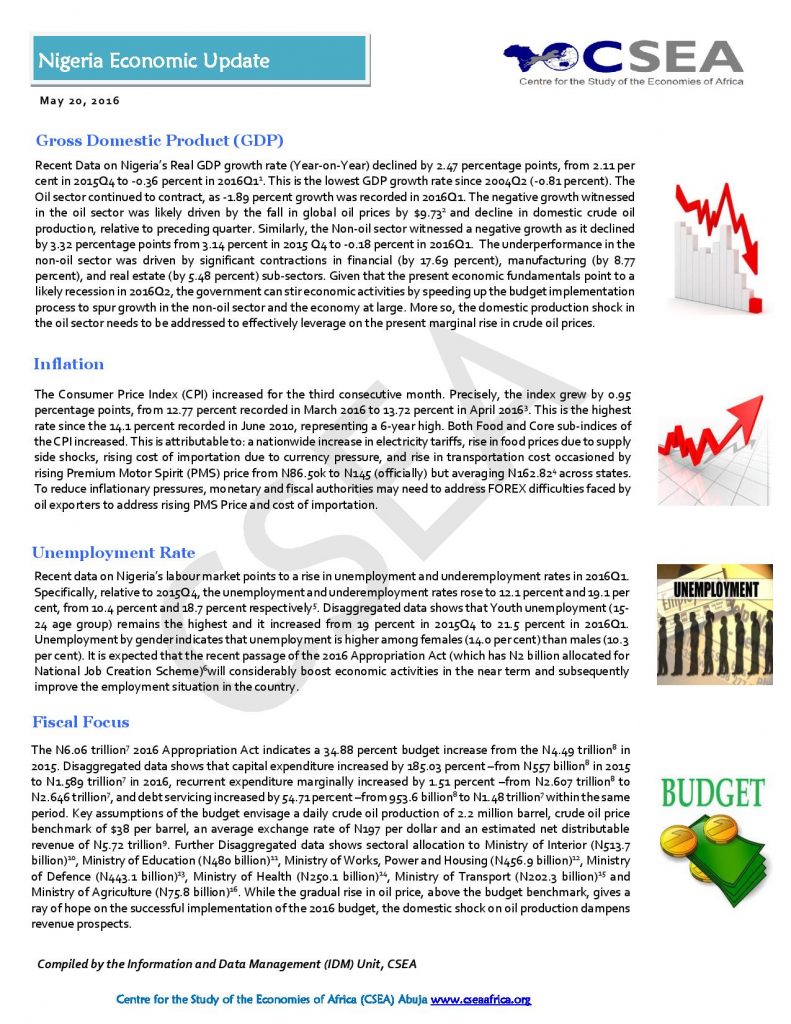Macroeconomic Report & Economic Updates

May 26, 2016
Nigeria Economic Update (Issue 23)
Recent Data on Nigerias Real GDP growth rate (Year-on-Year)
declined by 2.47 percentage points, from 2.11 per cent in 2015Q4 to -0.36
percent in 2016Q11. This is the lowest GDP growth rate since 2004Q2
(-0.81 percent). The Oil sector continued to contract, as -1.89 percent growth
was recorded in 2016Q1. The negative growth witnessed in the oil sector was
likely driven by the fall in global oil prices by $9.732 and decline
in domestic crude oil production, relative to preceding quarter. Similarly, the
Non-oil sector witnessed a negative growth as it declined by 3.32 percentage
points from 3.14 percent in 2015 Q4 to -0.18 percent in 2016Q1. The underperformance in the non-oil sector was
driven by significant contractions in financial (by 17.69 percent), manufacturing
(by 8.77 percent), and real estate (by 5.48 percent) sub-sectors. Given that
the present economic fundamentals point to a likely recession in 2016Q2, the
government can stir economic activities by speeding up the budget
implementation process to spur growth in the non-oil sector and the economy at
large. More so, the domestic production shock in the oil sector needs to be
addressed to effectively leverage on the present marginal rise in crude oil
prices.
